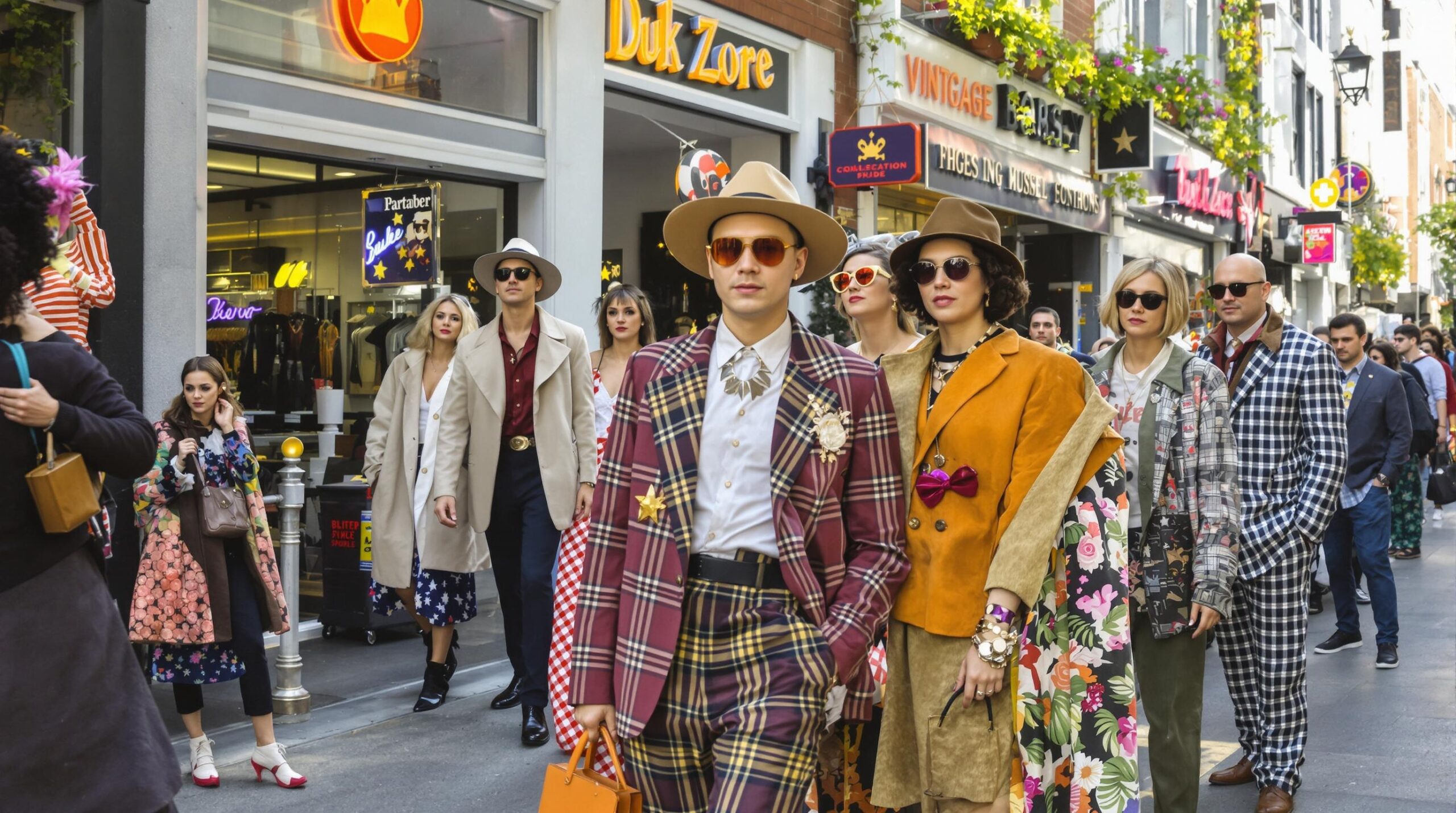The fashion industry has always thrived on creativity, innovation, and a touch of nostalgia. In recent years, there has been a notable resurgence in the popularity of vintage fashion. This cyclical return has profoundly influenced modern style trends, reshaping how we perceive and consume fashion. Throughout this article, we will explore the factors driving this resurgence, its influence on current trends, and the fashion industry’s future.
The Rise of Vintage Fashion
Vintage fashion refers to clothing and accessories at least 20 years old. This style boasts a unique charm and historical significance. Over the past decade, consumers have shown a growing interest in retro designs. This trend reflects a desire to reconnect with the styles of bygone eras. Many fashion enthusiasts are eager to own pieces that tell stories and exhibit unique craftsmanship. Unlike their modern counterparts, vintage items often showcase superior quality and attention to detail.
One reason for this growing interest is the shift towards sustainability. Modern consumers are increasingly environmentally conscious. They are seeking ways to reduce their carbon footprint. Vintage fashion offers a sustainable choice by recycling and reusing clothing. This approach reduces waste and the need for new materials, aligning with the values of eco-conscious consumers. As a result, vintage shops, thrift stores, and online marketplaces have flourished, becoming treasure troves for the style-savvy.
Influences on Modern Trends
The cyclical nature of fashion is nothing new. Trends from yesteryears often find their way back into the spotlight. Vintage fashion is a key driver for this cyclical momentum. Designers draw inspiration from past styles for their modern collections. They incorporate retro elements with contemporary aesthetics, blending the old with the new.
For instance, high-waisted jeans from the 1980s and 1990s have significantly returned in recent years. Their return highlights the fashion cycle’s impact. The resurgence of bold, colorful prints from the 1970s is another example showcasing vintage influence. Designers reinterpret these patterns with a modern twist. This creates eclectic collections that cater to contemporary sensibilities while acknowledging history.
Celebrities and influencers play a pivotal role in popularizing vintage-inspired trends. High-profile figures are often spotted wearing vintage pieces. Their choices introduce classic styles to younger audiences. This exposure influences fans to explore and adopt similar fashion choices. Consequently, the ripple effect further amplifies the vintage fashion wave.
The Role of Technology and Social Media
Technological advancements and social media platforms have accelerated the vintage fashion trend. Instagram, in particular, has been instrumental in propelling vintage fashion to mainstream popularity. Influencers and fashion enthusiasts share their vintage finds via visually striking posts. These posts reach a global audience, inspiring others to pursue similar styles. Hashtags like #VintageFashion and #RetroStyle allow users to discover and contribute to the conversation. This interaction creates a vibrant, interconnected community of retro-chic enthusiasts.
Online marketplaces have revolutionized the accessibility of vintage fashion. Platforms like Etsy, eBay, and Depop connect buyers and sellers worldwide. This ease of access enables enthusiasts to source unique pieces from across the globe. These platforms provide a vast array of styles and eras to choose from. Subsequently, technology has played a vital role in facilitating the global exchange of vintage goods and ideas.
The Economic Impact of Vintage Fashion
The vintage fashion market has experienced significant growth. Consumers’ increasing demand for sustainable options fuels this expansion. As a result, thrift stores, consignment shops, and vintage boutiques have proliferated. This growth creates new business opportunities and revitalizes the retail landscape. Small businesses and entrepreneurs benefit from the rising interest in pre-owned clothing. They capitalize on the trend while promoting sustainability and mindful consumption.
Additionally, the fashion industry’s economic dynamics shift with the rise of vintage fashion. Traditional brands face competition from vintage sellers. They are forced to rethink their strategies to stay relevant. Some brands embrace the trend by incorporating retro elements into their collections. Others collaborate with vintage brands to create unique offerings. This adaptation demonstrates how the vintage resurgence has impacted traditional fashion business models.
Challenges and Criticisms
Despite its many positives, vintage fashion faces challenges and criticisms. One concern is the potential for inflated prices. Some sellers capitalize on the trend’s popularity by increasing prices. This practice makes vintage fashion less accessible to average consumers. Consequently, it raises questions about the democratization of fashion.
Authenticity is another issue within the vintage market. As demand grows, counterfeit or misrepresented items become more prevalent. Unscrupulous sellers may deceive buyers with fake labels or incorrect era classifications. This undermines genuine vintage sellers and erodes consumer trust.
Moreover, vintage fashion’s popularity can lead to cultural heritage commodification. Fashion pieces from specific eras are often linked to artistic movements and historical events. Misrepresenting or appropriating these items may detract from their original significance. It’s essential to approach vintage fashion with cultural sensitivity and awareness.
The Future of Fashion Trends
Vintage fashion’s impact on modern style trends is profound and multilayered. As sustainability remains at the forefront of consumer priorities, vintage fashion is vital for a greener future. The cyclical return of past trends suggests continued evolution in fashion. This evolution blends historical influences with modern innovation.
As technology advances, the accessibility and visibility of vintage fashion will grow. Emerging platforms and digital tools will further support the trend. They are creating novel ways for consumers to engage with past styles. Brands may increasingly collaborate with vintage enthusiasts to incorporate unique elements in their collections. These collaborations will ensure a diverse, dynamic fashion landscape.
In conclusion, vintage fashion’s cyclical return has undeniably shaped modern trends. It impacts style choices, consumer behavior, and business strategies. The growing demand for sustainable options and cultural appreciation has driven this trend. As vintage fashion continues to permeate mainstream culture, it will play a vital role in shaping the future of style. The ongoing dialogue between past and present in fashion exemplifies its dynamic, ever-evolving nature. As consumers and creators, let us embrace and celebrate this rich and intricate style tapestry.

